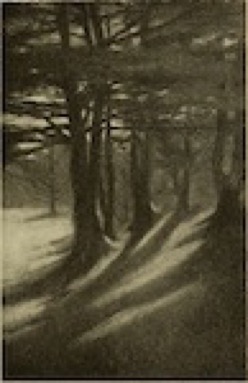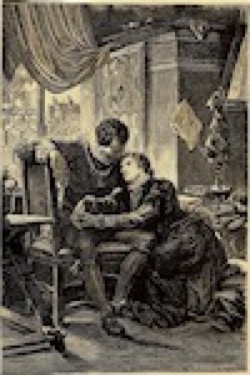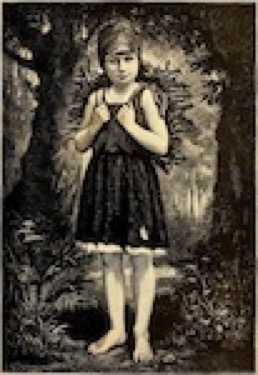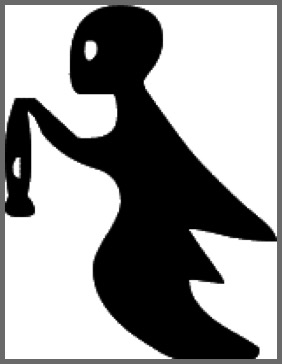Creativity
Impressions - Business Writing
October/09/2023 06:03 PM Filed: Impressions

Read my January 2008 interview for Communication Concepts with Dr. Katherine Wikoff, a professor at the Milwaukee School of Engineering. Business writers can learn valuable techniques from literature, advice that transcends time in Writing That Works.
Literary Perspective - Symbolism
October/13/2016 01:29 PM Filed: Literary Perspectives

Credit: Outlook Co.
(Wikimedia Commons)
Symbolism
A literary symbol is a material object that takes on psychological significance, whereas a metaphor involves the comparison of an entity, a place, or an event to a personality or a character’s behavior. Critics agree on definition, but an individual may evaluate a work of fiction and come up with a unique opinion, rather than a written-in-stone analysis.
In a story, the protagonist makes decisions influenced by the dominance of this symbol.
Literary Perspective - Turbulence Beneath the Calm
October/13/2016 10:32 AM Filed: Literary Perspectives

Credit: E. Hess
(Wikimedia Commons)
Turbulence Beneath the Calm
Women in transition are often portrayed with a calm demeanor in literary stories. Disputes remain low-key or nonexistent, unlike mass-market fiction in which arguments escalate to violence. These scenarios present exaggerations, inaccurate illustrations of reality, but skilled authors know the importance of achieving dramatic effect through understatement.
Beneath a quiet, unassuming woman lingers a passionate side she keeps concealed due to the dictates of society. Underlying turbulence within placid, easygoing heroines is a common device to counteract hysterical, drug-subdued portrayals. A high-strung woman meets disrespect unless her anxiety-driven personality is career-oriented.
In the past, creative energy could not be focused on a professional endeavor because it undermined a woman’s responsibility as a nurturer and caregiver. In contrast, men are frequently depicted suffering from neurosis, while an uncaring woman lurks nearby. Neither role is appealing.
Literary Perspective - Searching for Individuality
October/13/2016 10:14 AM Filed: Literary Perspectives

Credit: E. Hess
(Wikimedia Commons)
Searching for Individuality
The most difficult time in an adolescent’s life is finding a sense of identity in a world governed by overwhelming adult influence. A teenager feels pressure from parents and teachers to establish a “self” not far from the norm established by family and school. If Dad loves football, his son is expected to enjoy the sport. If Mom is a nurse, her daughter is encouraged to join the profession with enthusiasm.
This is not the pattern that life usually takes. Self-discovery often leads to loss of approval from an authority figure, followed by rebellion and impulsive mistakes. The damage done—sometimes permanent—destroys relationships and even lives.
Childhood impressions are indelible ink on the canvas of the mind. The protagonist acts on past experiences and aspires to higher goals or remains within the confining social structure defined in youth. A teen emerges from a struggling, often poor background to form a conclusion, make a transition, or set a course of action.
A good story establishes a sense of identity within the developing mind of a young adult. Ideally, this realization leads to social integration, emotional stability, and finally, maturity.
Literary Perspective - Psychological Drama
October/12/2016 10:38 PM Filed: Literary Perspectives

Credit: Gabriel Gaston Context Croft
(Wikimedia Commons)
Psychological Drama
Imagination is a psychological distraction and a method of creation. When reality falls short of expectation, the inventive part of the intellect takes over and explores alternatives to this unacceptable situation. Some call it brainstorming, a developmental procedure that can be examined and displayed on a whiteboard. The mystery diminishes under sober scrutiny, but the art of creating can be taught. Few begin with a blank slate, which would be similar to starting with a blank mind. Every conceptualized scenario has its inherent makeup, just like a human is a complex network of genes.
An author uses this discovery process to write fiction. Within a distant realm of the brain is a womb where characters and settings are conceived. Psychological drama can be lighthearted or serious, depending on mood and temperament. Background, religion, and education contribute to the style and tone.
The merging of fantasy and reality is at the core of the paranormal story. Mass-market analysts assert that a story is purely entertainment. Readers of commercial fiction do not consult study guides to comprehend a hidden symbol, nor does a movie theater audience probe a film’s inner message. Being oblivious, however, does not mean the profound reason for creation is nonexistent. Differences exist in the quality of the finished work, but every writer redefined the world within a unique plot line.
Impressions - Motivation
June/27/2014 04:08 PM Filed: Impressions

Motivation: The Creative Tunnel
Merely giving a writer the opportunity to create is not sufficient motivation to do so. Some believe money should not be used as a lure. This is a noble proposal, but even among those with incredible talent and no financial need, an accolade or a reward must exist at the end of the creative tunnel. An audience is necessary to bring the project to fruition, for without the praise and criticism of the public, the work remains unfinished. Acknowledgement of peers may not satisfy.
Impressions - Ghostwriters
January/28/2014 05:00 PM Filed: Impressions

Ghostwriters: A Spooky Crowd
Is it in an author’s best interest to “ghost” for money? Merriam-Webster provides several definitions for this closeted process:
1) To write for someone else using that person’s name.
2) To write for and in the name of another.
3) To write for another who is the presumed author.
A ghostwriter is not to be confused with a copywriter, who is generally affiliated with an agency or a business:
1) Someone whose job is to write the words for advertisements.
2) A writer of advertising or publicity copy.
Ghostwriting does not advance one’s career, but copywriting does.